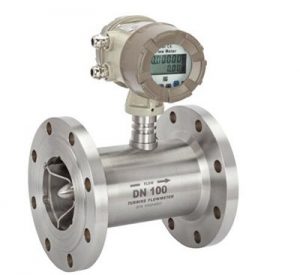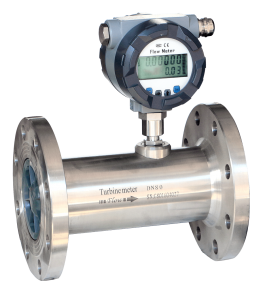1. Suitable fluid for measurement.
The sensor is most suitable for measuring clean (or basically clean) low-viscosity single-phase fluid (gas or liquid), such as water, light oil, petroleum solvent, acid, alkali, liquid oxygen, liquid nitrogen, liquid hydrogen and air, oxygen, etc. If measuring high-viscosity liquids, the accuracy of the measurement will be reduced due to the influence of viscosity on the performance of the sensor. If measuring the liquid is mixed with solid particles, it is easy to damage the bearing, and the turbine flowmeter is not suitable for use. When measuring highly corrosive liquids, it will be difficult to select materials for main parts such as impellers, and its corrosiveness has certain limitations, so choose carefully. Gas measurement is appropriate, but because the gas density is low and the flow rate is high, special consideration must be given to the design of structural parameters. Generally cannot be used for gas-liquid mixed-phase flow and steam measurement.
2. Selection of caliber.
Sensors of each caliber have a certain flow measurement range. Generally, the selection of sensor caliber is determined by the measurement range, that is, the minimum flow rate during use shall not be lower than the minimum flow rate allowed by the caliber, and the maximum flow rate during use shall not be higher than the maximum flow rate allowed by the caliber. Considering the two aspects of measurement accuracy and service life, it is generally believed that in the occasion of intermittent use (the actual operation is less than 8h per day), the sensor caliber should be selected according to 1.3 times the maximum flow rate in actual use. In the case of continuous use (more than 8 hours of actual operation per day), select the sensor diameter according to 1.4 times the maximum flow rate in actual use. As for the use under severe working conditions (such as liquids that are easy to liquefy, liquids containing tiny particles, etc.), the maximum flow rate during use should be 40% of the maximum flow rate allowed for the caliber. If the diameter of the sensor is inconsistent with the diameter of the processing pipeline, the pipeline should be modified with a reducing pipe and an equal-diameter straight pipe.
Under normal circumstances, the lower limit of the sensor flow range is slightly larger. Usually, 0.8 times the actual minimum flow is used as the lower limit of the selected sensor flow range, and a certain margin is guaranteed.
3. Selection of bearings.
In order to improve the measurement accuracy of the transmitter, the friction distance between the shaft and the bearing is minimized. Generally, rolling bearings are used for measuring fluids with good lubricity (gasoline, kerosene lamps); sliding bearings with self-lubricating properties (such as plastics, graphite carbon bearings, etc.) are used in non-lubricating liquid measurement; super hard Alloy bearings (such as tungsten carbide bearings, etc.) are used for fluids that are easy to liquefy, fluids mixed with fine particles, corrosive fluids, and for continuous use of transmitters.


